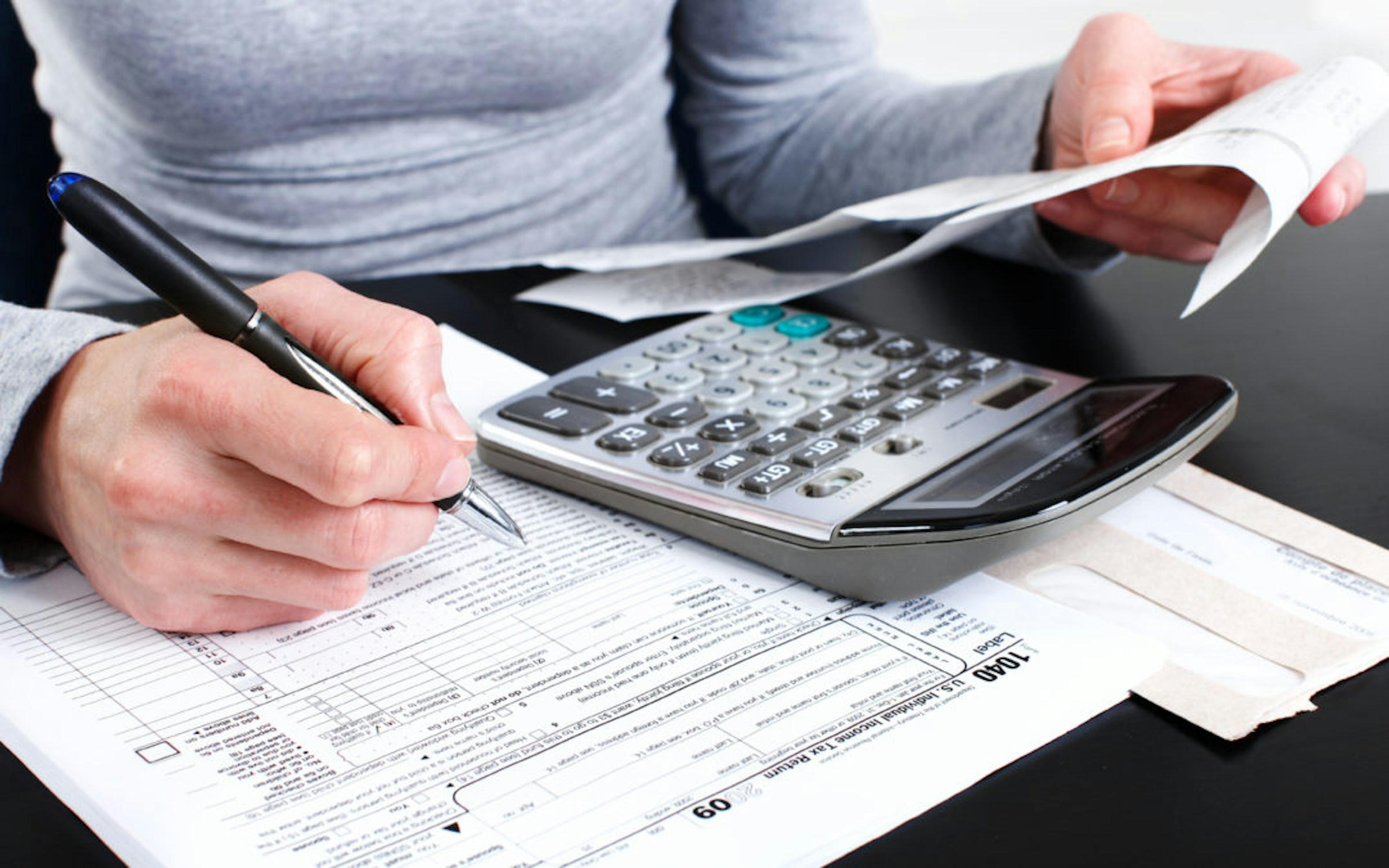P11D Forms Explained: Your Complete Guide for 2025-26

A P11D is a form employers can use to tell HMRC about any perks or expenses they've provided to directors or employees throughout the year.
In other words, it’s all the extras your team gets, like private medical plans, gym memberships, company cars, season rail tickets, and more.
The core purpose of a P11D is to account for all taxable benefits each employee receives (and which should be reflected on any self-assessments). It’s a little tricky to fill out, so we'll guide you through the details…
What is a P11D form, and what is it used for?
For each employee who received ‘perks’ or got expenses covered by your business in the year, you'll have to fill out a P11D. This list doesn’t need to be exhaustive, though there are a lot of items that you must include.
Why share this information with HMRC? Simply put:
some of the items you’ll list can impact your company’s National Insurance contributions.
In addition to this, the taxable benefits or expenses you add for each employee could change their tax code.
As an employer, it comes down to you to complete these P11D forms. In other words, it’s not the employee’s responsibility but yours to ensure HMRC has been told about all the perks you provide your workers.
As we touched on briefly, the rules surrounding P11Ds can get a little confusing (and can, sometimes, change). So it’s important to keep very good records and to stay on top of compliance.
What is the difference between a P11D and a P45 or P60?
Where a P60 outlines the amount of tax a staff member has paid on their salary, a P11D focuses on the tax the employer has to pay in providing employee benefits. Both of these forms are annual, whereas a P45 is only given to an employee when they leave.
What about payroll benefits?
More recently, payrolling Benefits has been gaining popularity as a faster alternative to P11Ds. If you want to switch to this scheme, you’ll have to register for it with HMRC.
Not ready to register? You can still choose to report employee benefits with P11D forms. And we’ll go over how to do this in this post.
When is the deadline to submit P11Ds?
The submission deadline is always the 6th of July for the previous tax year. Any Class 1A National Insurance you then owe must be paid a couple of weeks later by the 22nd of July.
Are there P11D late filing penalties?
Yes. If your P11D(b) submission (we’ll explain this form later) is tardy, then you’ll incur a penalty of £100.00 per 50 employees for every month outstanding. There are also penalties and interest if you’re late making your payment of Class 1A NICs.
There's also potential further penalties for consistently late submissions or incorrect information.
What should you include on a P11D form?
It’s simple - any kind of perk or expense your company is paying for which is taxable should go on a P11D form. It’s important to note there are some exceptions to this; there are exceptions for certain items and services, including if they’re already been payrolled. Some of the most common items to include are:
Company car expenses, like mileage allowances or fuel
Private car running costs
Private medical insurance
Accommodation costs
Gym memberships or other subscription services
Mobile subscription plans
Childcare costs
Still unsure what goes on a P11D form? HMRC provides a complete list of all expenses you should include on their website.
What doesn’t need to be included?
As mentioned just now, there are certain benefits and expenses that are exempt from P11Ds.
Round sum allowances, for instance, which have been paid through payroll, shouldn’t be included. For example, let’s say as an employer that you provide a travel allowance of £50.00 per month for employees who don’t have a company car. The allowance is classed as earnings and is paid as a normal gross payment on the payroll, so tax and Class 1 national insurance is calculated on the payroll. Therefore, there's nothing else to pay and report on a P11D.
Perks or expenses that are exempt from tax or NI, like business travel or uniforms are also an exception as well as any expense you include in a PSA letter.

What's changing with P11D forms?
Important changes are coming to the way benefits in kind are reported in the UK. While P11D forms are still required for the 2025-26 tax year, HMRC has announced that mandatory payrolling of benefits in kind (BiK) will be introduced from April 2027. This means that most employers will need to transition from the traditional P11D reporting system to reporting benefits through their payroll software.
We recently hosted a webinar on this exact subject, with our payroll experts providing guidance for businesses on how to handle everything. You can rewatch it in full here.
What is a P11D(b) form?
Sounds similar to a P11D form, apart from the (b), right? That’s O.K. - you’d be forgiven for mixing these two forms up.
A P11D(b) acts as a summary statement of all the benefits (both reported on P11Ds and payrolled) that you’ve provided as a company for that year. To the tax authorities, it’s a declaration that these are all the perks your business has provided that year and that you haven’t knowingly left any items out.
A P11D(b) also tells HMRC how much Class 1A National Insurance you need to pay in total for everything provided. You’ll need to submit a P11D(b) form if:
You’ve already submitted P11Ds
HMRC asks you to submit a P11D(b) by HMRC
You paid for employee benefits and expenses through their payslips
That last bit about benefits and expenses paid through payslips is important. Some employers believe that as long as benefits are payrolled, they don’t need to submit a P11D(b). But this is a common misconception. Whether you report benefits through P11Ds or payroll them, they must be included on your P11D(b). Without a P11D(b), your Class 1A NIC won't be able to be calculated.
How do I file a P11D form?
Filing a P11D form is pretty straightforward, though it can be time-consuming depending on how many employees you’ll need to file for.
As paper submissions are no longer accepted for the 22/23 tax year and beyond, the only way to file P11Ds is online. You can choose to do this directly with HMRC through their service or by using a payroll or P11D software.
While a pretty straightforward process, filing out and submitting P11D forms directly can be time-consuming. Using payroll software can help speed up this process as you can bulk-upload your benefits (like you can with PayFit).
How do you fill out a P11D correctly?
Submitting P11Ds can be a highly manual and time-consuming process, which means it can quickly become overwhelming without proper planning. With so many other things happening for businesses over Spring, it can be easy to relegate this task to the very last minute.
However, with a bit of foresight and proper planning, you can manage P11D submissions a lot more smoothly.
Here are four steps for a smoother submission process.
Key deadlines for 2025-26
6 July 2025: Deadline for submitting P11D and P11D(b) forms to HMRC
6 July 2025: Deadline for providing P11D copies to employees
22 July 2025: Deadline for paying Class 1A NICs electronically
19 July 2025: Deadline for paying Class 1A NICs by cheque
Five steps for smoother P11D submissions
List of all benefits provided to employees
Before even starting your submissions, gather all the information. Start by listing out all the benefits you provide employees, whether one-off or on a regular basis.
Gather all annual values for the tax year
For each benefit you provide, you’ll need to determine the annual value for that tax year. In other words, you’ll need to determine how much a specific item cost in total for that tax period.
Most benefit providers can provide this information. For instance, if you provide health insurance with Vitality, you can ask them for a breakdown of premiums. Make sure this includes the total employer cost and any contributions made by the employee.

PayFit Top Tip 🚀
Chances are your third-party provider will need time to prepare your data. Given that other companies are also getting ready for the submission deadline, it’s also more than likely they’ll be busier during this period. So it’s a good idea to get your request in early. If you leave it to the last minute, it may be more challenging to get your data on time to prepare your P11D submission.
Review benefits received by leavers
It can be easy to forget about leavers. Think about it: if someone left the company months ago, they might not readily come to mind right before the deadline. But if you don’t include benefits information for leavers, then you might not produce the right number of P11Ds, leaving you open to fines or penalties from HMRC.
Complete your submissions
Once you’ve gathered all your data, including that for leavers, you’re ready to work on your P11Ds. HMRC doesn’t accept multiple submissions, so you need to submit them all in one go.
Double, then triple check (everything)
It can be tricky to correct a P11D once it’s submitted. So it’s worth checking everything you include as thoroughly as possible. If you don’t use payroll software that automates calculations for you (which is, by the way, a smart idea!), then this is especially important.
PayFit top tip 🚀
Remember, it's all about timing. The deadline to make your P11D submissions is July 6th, so it’s a good idea to plan ahead and set some time aside early in June. That way you avoid any conflicts with your usual month-end payroll duties.
Finally, here are a few recent changes from HMRC to keep in mind
P11D submissions - If you’re an organisation with less than 500 employees, you can now submit P11D forms through the employers PAYE portal. As mentioned previously, HMRC no longer accepts paper submissions so the only options are to submit via the digital portal or by using a commercial payroll software.
Online PSA - As of the new tax year, HMRC allows employers to set up, change or cancel a PSA settlement agreement online. Instead of waiting months to see if a PSA was agreed upon, employers can now check the status of their applications online. To learn how to craft a PAYE settlement agreement, check out PayFit’s template.
Let PayFit handle your P11D submissions
As one of the trickier aspects of payroll, P11Ds can create alot of work and admin for you team. But with PayFit, that can all go away!
PayFit automates P11D submissions so you don’t have to waste time filling these out one by one, but you can also sign up for our higher level package:
Share your benefits data, and we’ll do all the formatting and uploading for you!
We’ll take care of all the ‘back-and-forth’ with HMRC over changes and corrections
We’ll also provide an expert eye to look over all your submissions, and ensure these are correct.
Sign up for a demo, and one of our dedicated product specialists can walk you through this.
FAQs about P11Ds for employers
If you make a mistake on a P11D submission, then you’ll need to submit it. It used to be that you could simply submit paper corrections. However, this is no longer the case. Instead, you’ll have to submit the corrected values through HMRC’s digital service. You’ll also need to include a new P11D(b) that reflects these corrections.
The transition to mandatory payrolling of benefits in kind will take effect from April 2027. Until then, employers must continue submitting P11D forms unless they've registered for voluntary payrolling. This change aims to streamline the reporting process and reduce administrative burden.
If you've registered to payroll benefits before the tax year starts, you generally won't need to submit a P11D for those benefits. However, you'll still need to submit a P11D(b) to report any Class 1A NICs due.
Missing the P11D deadline can result in automatic penalties starting at £100 per 50 employees per month. It's crucial to submit your forms by 6 July and pay any Class 1A NICs by 22 July (for electronic payments) to avoid these charges.
Start preparing early by ensuring your payroll software can handle benefit reporting, reviewing your current benefits package, and understanding the new requirements. Consider voluntary payrolling before it becomes mandatory to ease the transition.








